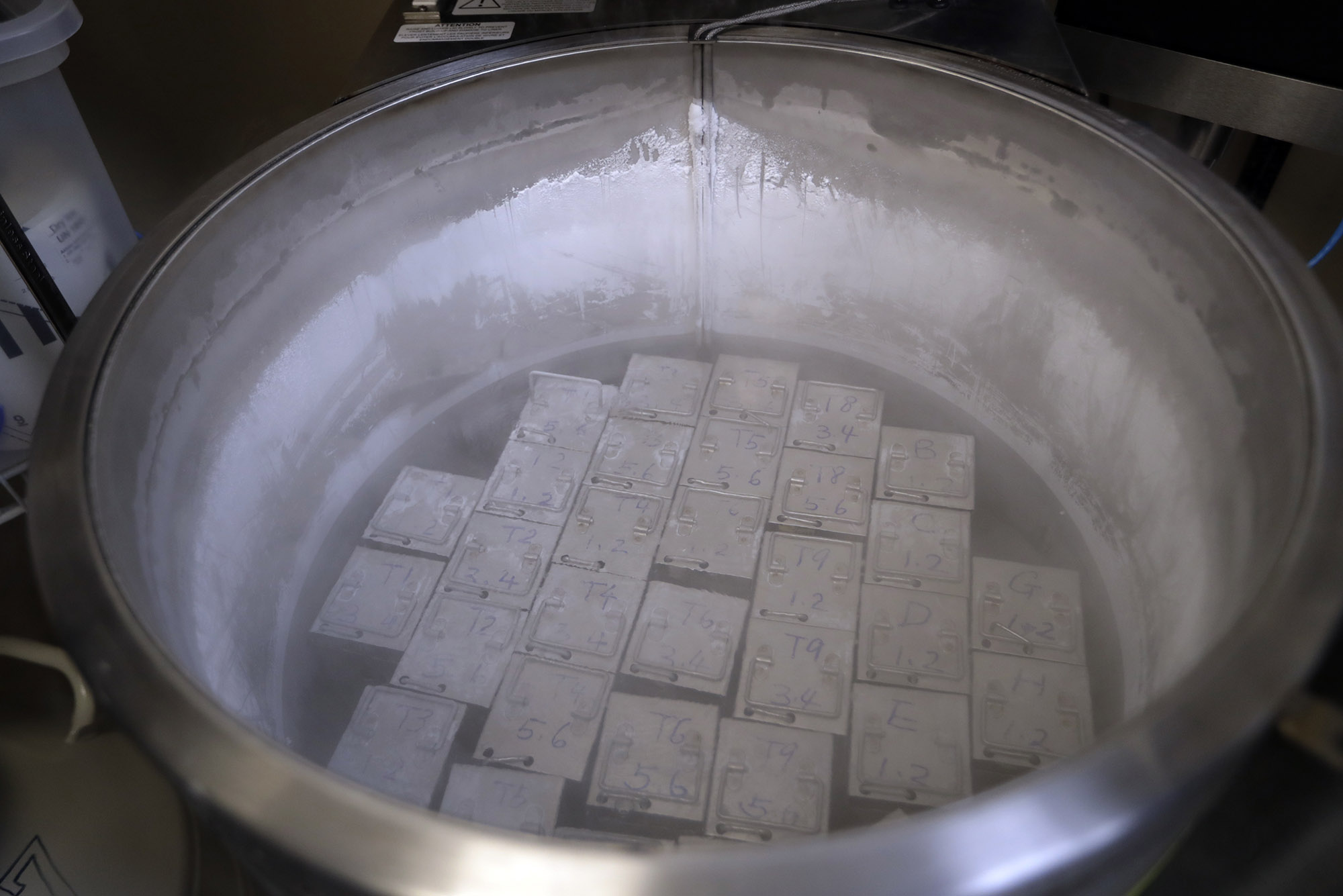Alabama Court Ruling That Frozen Embryos Are Children and Its Impact on the Future of IVF Treatment.

“This decision, without any action on the part of the Alabama legislature, will make it much harder for people to make choices about discarding the frozen embryos—which, to be clear, are just a mass of cells,” says Nicole Huberfeld, Edward R. Utley Professor of Health Law and codirector of the University’s Program on Reproductive Justice. AP Photo/Lynne Sladky.
Alabama Court Ruling That Frozen Embryos Are Children and Its Impact on the Future of IVF Treatment
Nicole Huberfeld spoke to BU Today about the Court’s recent decision and how it “may influence other state supreme courts.”
A version of this article originally appeared in BU Today.
When the Alabama Supreme Court ruled that frozen embryos should be considered children and that people can be held legally responsible for destroying them, the decision reverberated across the country. It was also a decision that could have a widespread chilling effect on the use of fertility treatments such as in vitro fertilization (IVF), says Nicole Huberfeld, Edward R. Utley Professor of Health Law and codirector of the University’s Program on Reproductive Justice.
The decision, released Friday, February 16, stems from an unusual set of cases, Huberfeld says. The ruling follows two lawsuits filed by three sets of parents who underwent IVF procedures to have babies and then opted to have the remaining embryos frozen.
They allege that in 2020, a patient at the Mobile, Ala., hospital where the frozen embryos were being stored, walked into the fertility clinic through an “unsecured doorway” and removed several embryos from the cryogenic nursery, the state’s Supreme Court ruling said. The patient’s hand was “freeze-burned” by the extremely low temperatures the embryos were stored at, and the patient dropped the containers on the floor, destroying the embryos within, according to the ruling.
The parents sued for wrongful death, a claim that a lower court initially rejected. The state Supreme Court’s stunning reversal holds that those frozen embryos were children, and they are covered under Alabama’s Wrongful Death of a Minor law.
“This decision, without any [intervening] action on the part of the Alabama legislature, will make it much harder for people to make choices about discarding the frozen embryos—which, to be clear, are just a mass of cells,” Huberfeld says. “We’re talking about something the size of a freckle.”
The wrongful death law this court’s decision rests on predates the US Supreme Court’s 2022 decision in Dobbs v. Jackson Women’s Health Organization, which overturned half a century of precedent by ruling that the US Constitution does not confer a right to abortion. But Dobbs is not absent from the story here, Huberfeld says—the decision made highly restrictive abortion laws enforceable in their respective states. Before Dobbs, these laws were on the books, but unenforceable.
The court’s decision, rooted as it is in Alabama statute and its constitution, is not one that has a direct impact in any other state, Huberfeld says. But, with a handful of other states across the country that have laws on the books defining personhood as beginning at fertilization, it could set a precedent that others would follow.
“This decision looks narrow, but it is actually a decision that may influence other state supreme courts that have similar language about fetal life in their constitutions and laws,” Huberfeld notes.
And indeed, the ruling is already casting a shadow over assisted reproductive procedures in Alabama. On Wednesday, the University of Alabama at Birmingham health system—the state’s largest hospital system—announced it would pause IVF treatments while hospital officials evaluate whether its patients undergoing IVF or doctors performing the treatments could face criminal charges or punitive damages. On Thursday, officials from two more healthcare facilities, Alabama Fertility Services and the Center for Reproductive Medicine at Mobile Infirmary, announced they would do the same.
IVF treatment is an emotionally and physically exhausting process by which multiple eggs are harvested from a person’s ovaries, fertilized with sperm externally, and implanted in the uterus to create a pregnancy. In most cases, doctors create more embryos than they implant; patients store those additional embryos in liquid nitrogen for future use, donation, or destruction.
“I think if we look backwards as to how that process works, [this decision] will probably make it harder for people to have successful IVF,” Huberfeld says. “It is very difficult on the body to produce the eggs, and so people try not to do that more than one time. The goal is usually to extract more than one egg at a time. Now, people may be facing a situation in which they create fewer embryos or go through that process more than once.”
Nationally, just over 2 percent of infants are conceived using IVF or another type of assisted reproductive technology (ART), according to the US Centers for Disease Control and Prevention. In 2021, the most recent year for which data are available, about a quarter of all ART cycles resulted in a live birth, and about a half were “egg or embryo banking cycles,” in which all resulting eggs or embryos were frozen for future use.
Alabama’s Supreme Court ruling imperils those extra frozen embryos, as well as the people who choose IVF or other assisted fertilization—a population that’s disproportionately composed of same-sex couples and older people.
“A decision like this makes it harder for people who are already vulnerable to be able to access the care that they need to create families,” Huberfeld says.